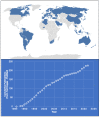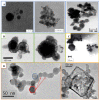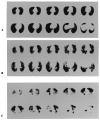Technegas, A Universal Technique for Lung Imaging in Nuclear Medicine: Technology, Physicochemical Properties, and Clinical Applications
- PMID: 37111594
- PMCID: PMC10144982
- DOI: 10.3390/pharmaceutics15041108
Technegas, A Universal Technique for Lung Imaging in Nuclear Medicine: Technology, Physicochemical Properties, and Clinical Applications
Abstract
Technegas was developed in Australia as an imaging radioaerosol in the late 1980s and is now commercialized by Cyclomedica, Pty Ltd. for diagnosing pulmonary embolism (PE). Technegas is produced by heating technetium-99m in a carbon crucible for a few seconds at high temperatures (2750 °C) to generate technetium-carbon nanoparticles with a gas-like behaviour. The submicron particulates formed allow easy diffusion to the lung periphery when inhaled. Technegas has been used for diagnosis in over 4.4 m patients across 60 countries and now offers exciting opportunities in areas outside of PE, including asthma and chronic obstructive pulmonary disease (COPD). The Technegas generation process and the physicochemical attributes of the aerosol have been studied over the past 30 years in parallel with the advancement in different analytical methodologies. Thus, it is now well established that the Technegas aerosol has a radioactivity aerodynamic diameter of <500 nm and is composed of agglomerated nanoparticles. With a plethora of literature studying different aspects of Technegas, this review focuses on a historical evaluation of the different methodologies' findings over the years that provides insight into a scientific consensus of this technology. Also, we briefly discuss recent clinical innovations using Technegas and a brief history of Technegas patents.
Keywords: Pertechnegas; Technegas particles; argon; lung imaging/ventilation; particle size; pulmonary embolism; radioactive aerosol; technetium-99m-pertechnetate.
Conflict of interest statement
The authors declare no conflict of interest.
Figures













References
-
- Burch W.M., Sullivan P.J., Lomas F.E., Evans V.A., McLaren C.J., Arnot R.N. Lung ventilation studies with technetium-99m Pseudogas. J. Nucl. Med. 1986;27:842–846. - PubMed
-
- Casey B. SNMMI Urges Fast-Track Review of Technegas for V/Q Scans. 2021. [(accessed on 1 September 2022)]. Available online: https://www.auntminnie.com.
Publication types
LinkOut - more resources
Full Text Sources
Miscellaneous

